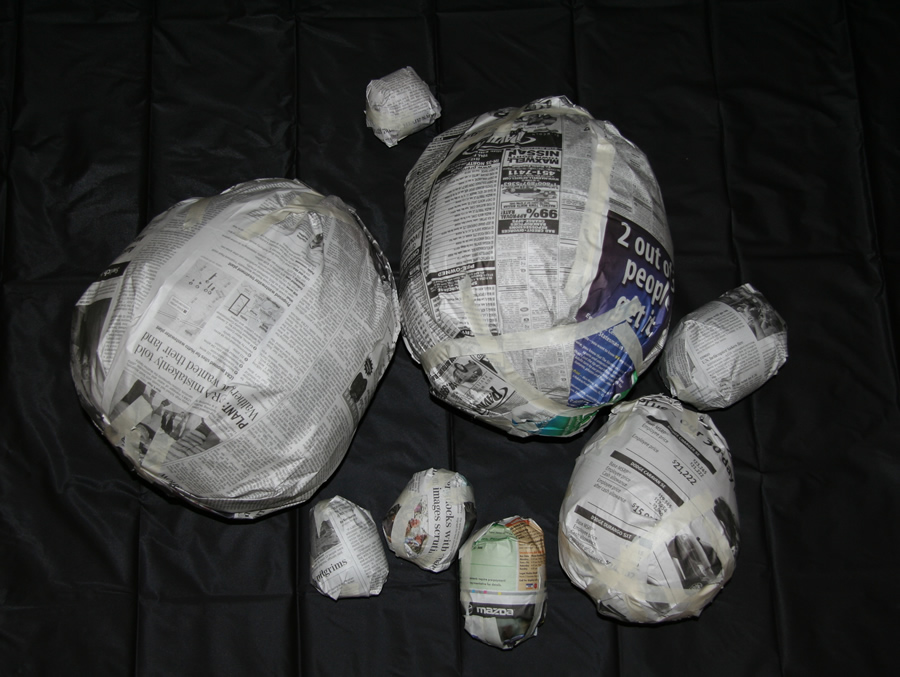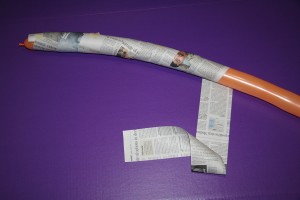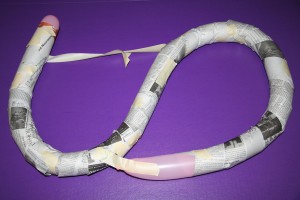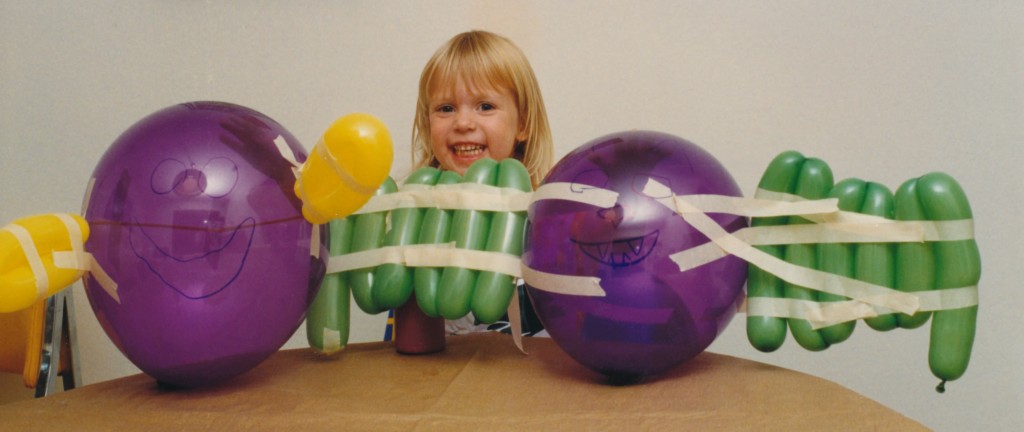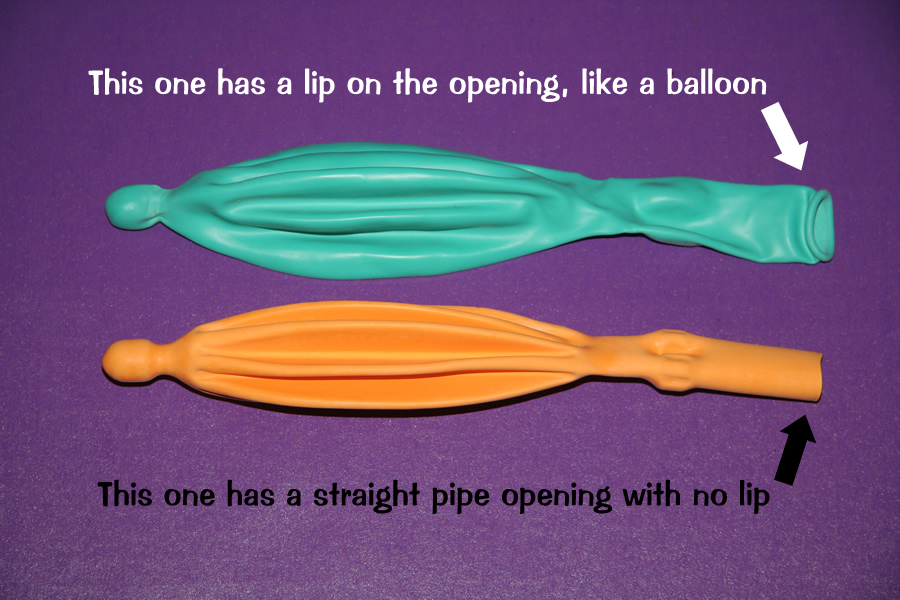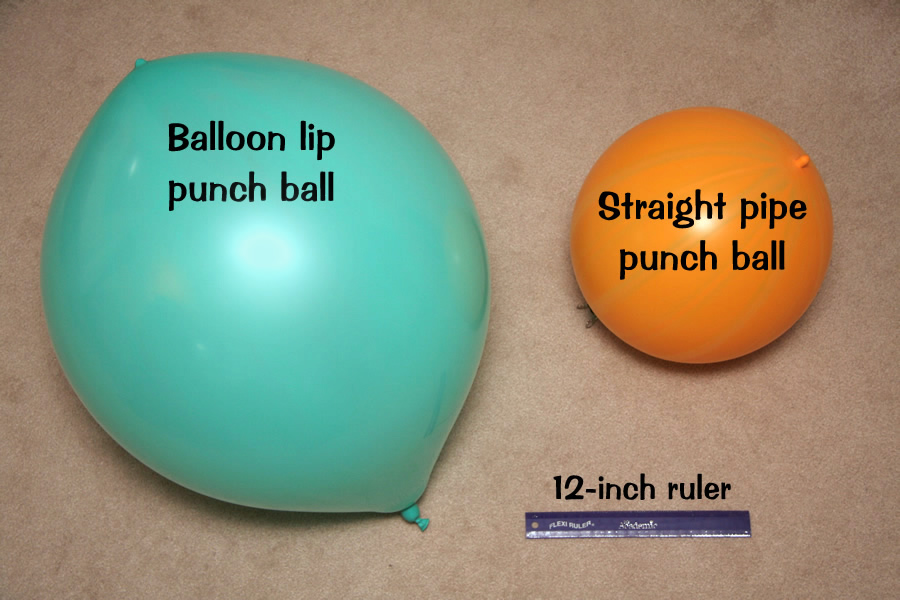Most of the time I form the body of my piñatas from balloons. For some designs thin cardboard works better, but thin cardboard is harder to break, so when I have a choice I go with balloons.
I usually wrap the balloons in newspaper before I apply the papier mâché strips, especially if I’m decorating with crepe paper. Laying the papier mâché directly onto the balloon will give you a smoother surface, but it takes more layers of papier mâché before the piñata will hold its shape. I try to wrap the balloons as smoothly as I can by cutting off excess newspaper and using masking tape to flatten bumps.
Long, thin balloons are good for making things like arms and legs and tails. To shape long balloons, I wrap them in a spiral of newspaper strips. This allows me to curve the wrapped balloon into whatever shape I need. I use masking tape to hold the balloon in shape until the papier mâché is dry, and then I cut the masking tape away.
Long balloons can also be bent to form other shapes, such as the arms and wings on the Ghost and Bat.
If you’re using punch balls to make a large piñata, you should know that there are two different kinds of balloons that are both labeled “punch ball.” The ones with a lip on the opening (like a regular balloon) blow up larger but not quite round. The ones with a straight pipe opening blow up smaller but almost perfectly spherical.
We used large punch balls to make the bodies of piñatas such as the Jaguar, Rainbow Zebra, and Green Shoyru. We used small punch balls for things like the Santa Smiley, and the Alien Planets. The Princess Ducky’s body was formed from a large punch ball, and her head from a small one. If you can’t find the small spherical ones, the larger ones are close to spherical when they’re smaller, and you can round them out if necessary with duct tape.

